Whether you’re looking for the best rooting hormone on the market or are looking to make your own rooting hormone at home, there are some seriously good, cost-effective options out there these days.
And when you’re trying to propagate a cutting, knowing you’re using a rooting hormone that’s proven to work is imperative. After all, we all want our little plant babies to grow up to be big and strong, so adding rooting hormone makes that much more likely and a much faster process.
As you’ll see, you don’t necessarily need a store-bought version, as using homemade rooting hormone is definitely a valid alternative – although that’s not to say that the commercial versions should be ignored. After all, they’re proven to work!
This is especially so when you realize that there are some mixed opinions on whether the DIY rooting hormones are actually as effective, as we’ll go through below. But given how easy they are to make and the fact you probably already have the ingredients in your pantry, you might want to consider giving them a try alongside the commercial versions to see which ones help your new houseplant thrive.
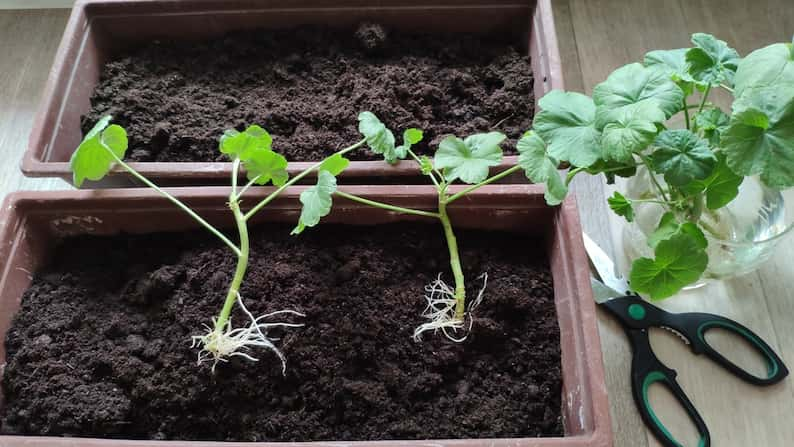
Table of Contents
Best rooting hormones
1. HydroDynamics Clonex Rooting Gel

There are generally three types of rooting hormone: liquid, powder and gel. I tend to consider gel as the best rooting hormone out of the three, as I find that it’s easier to use, sticks completely to the cutting (which can be an issue with the other two) and adheres as a thick layer, providing a bigger boost. Overall, I feel I’m getting the most bang for my buck with gel.
And out of all the gel rooting hormones out there, my top pick is definitely this Clonex Rooting Gel. For me, this is because:
- It’s proven to work – definitely a big reason
- It lasts a long time when stored correctly (i.e. in the fridge) with some people reporting that it lasts at least four years
- Literally all you have to do is dip the stem in the gel and you’re good to go
- Its active ingredient is indole-3-butyric acid (IBA), which occurs naturally in plants and is scientifically confirmed to stimulate root growth
- They state that its EPA-registered and safe for propagating vegetable and fruit plants as well as herbs – which is big for me, given I grow these.
It’s true that it’s not the very cheapest option around, but I wouldn’t consider it expensive either. And given all of the above, I think it’s well worth the price, which is why it’s easily my pick for the best rooting hormone.
2. Hormex Vitamin B1 Rooting Hormone Concentrate

Some people prefer liquid rooting hormone – and for good reason. A bottle of concentrated rooting hormone, like the one above, will last a lifetime given that you have to mix it with water before using it. There are also many that say that liquid versions provide the most coverage of a cutting, as it can easily be absorbed into the stem.
So if you’re in the market for the best liquid rooting hormone out there, you can’t go wrong with this Hormex Rooting Hormone Concentrate. You literally need just a teaspoon combined with one gallon of water and then dip your cutting in. It can also be used for transplanted plants to help prevent transplant shock, not only for propagation.
Vitamin B1 has been shown to be an effective nutrient to promote growth, with this product’s other active ingredient being naphthaleneacetic acid (NAA). This has similarities to IBA in that it’s shown to promote root growth. It’s worth mentioning that it’s a synthetic chemical formulation, if that’s important to you, although I wouldn’t be concerned given that NAA is also one of the most common chemicals found in rooting products.
3. Garden Safe TakeRoot Rooting Hormone

Powder rooting hormone is very widely used, largely due to its cost effectiveness and ease of use. That is, it’s by far the cheapest of the three types of rooting hormone and definitely lasts the longest as long as it’s kept dry.
You can either cover the cutting directly in the powder or, as many do to help it stick, dip the cutting in water first. Make sure that you put the powder on a plate or in a bowl first though to avoid getting moisture into the main container when you dip the wet cutting in.
And you really can’t go wrong with this powdered rooting hormone from Garden Safe. Like the first one above, the main active ingredient is IBA which is the naturally occurring rooting hormone in plants. It’s also very cheap, although not the biggest container in the world. This could be better for you though or storage purposes – and noting that this amount really will last you for ages.
Plenty of at-home gardeners swear by this one and given how amazingly cost-effective it is, you’d be well placed in giving it a try.
What’s the best rooting hormone for water propagation?
The best rooting hormone for water propagation is powder rooting hormone. Once you dip the cutting in the powder and then put it in the water, the water helps the powder stick to and remain on the cutting to stimulate as much growth as possible.
The source of all wisdom on the internet, Reddit, also seems to have several users (like here and here) that have also used powdered rooting hormone for water propagation.
As mentioned earlier, my personal pick for the best rooting hormone in powder form is Garden Safe TakeRoot Rooting Hormone. Funnily enough, you can also see an excellent video below from someone who compares the effect of cuttings rooted in water. In this video, one jar has no rooting hormone and the one has a powdered one – and the hormone he uses for this experiment is the Garden Safe one, so you can see it in action!
4. Aspirin
Most of us have aspirin in the back of a bathroom cupboard somewhere in case a headache suddenly comes on, but many people say that you can actually use it as a homemade rooting hormone too. It’s because aspirin contains salicylic acid, which helps to stop bacteria, fungus and other diseases from developing and affecting your houseplant.
You’ll need one 325mg uncoated aspirin tablet, like these ones, which you’ll then crush until it’s turned into powder. Add this powder to a glass of water and then soak the cuttings for at least an hour in that same water. After that, pot the cuttings in your rooting medium.
To be fair, there is some debate if this actually works. That said, if you already have some aspirin on hand, there’s no harm in giving it a try.
5. Aloe vera
Aloe vera is another natural rooting hormone that people say can be a good alternative to store bought. And this is another tick in favor of owning an aloe vera plant, which has all sorts of other soothing benefits! Open one up next time you have a sunburn or rash and you’ll be grateful you took the time to grow it.
All you have to do is cut off the larger end of an aloe vera leaf and squeeze out the gel. You can see the proper way to do that in the video below.
Once you’ve extracted the gel, put it in a bowl and mix it with a fork so that the gel starts to break down and become more of a liquid. When it gets to that point, cover the end of your cutting with the liquid aloe vera and plant it.
Is aloe vera a good rooting hormone?
Aloe vera is thought to be a good rooting hormone as its antifungal and antibacterial properties can help to protect your plant. However, scientific research into this doesn’t appear to be available.
Using a natural rooting hormone made at home like aloe vera won’t harm your plant but it’s good to keep in mind, like with some of the others on this list, that its effectiveness is unproven from a scientific point of view. The worst case scenario here then is that it won’t do anything at all.
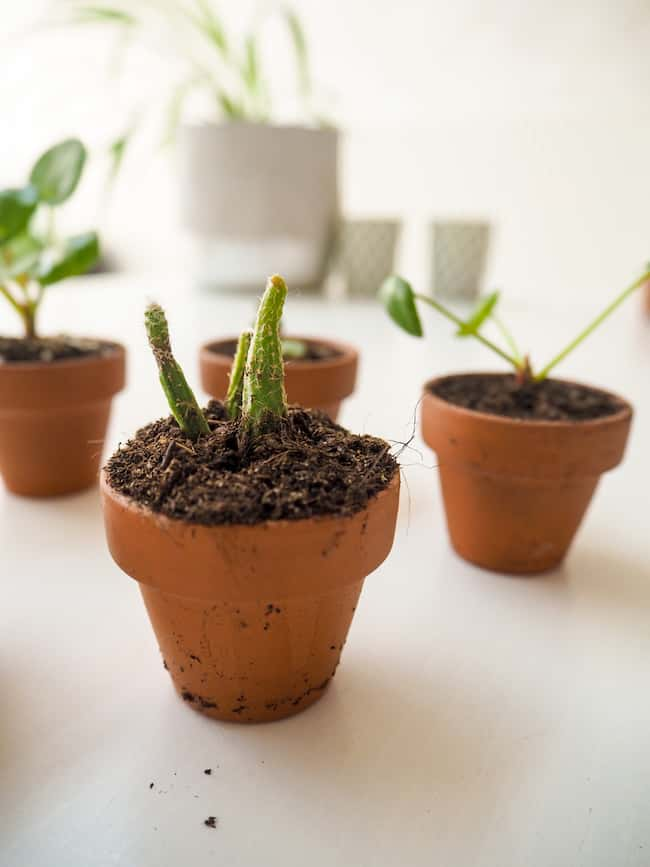
6. Cinnamon
Another popular homemade rooting hormone is cinnamon. This is on the basis of cinnamon also being good at preventing fungus, bacteria and even ants from taking hold to help your cuttings stay healthy while they’re rooting.
FYI: You should use powdered cinnamon for this, not a cinnamon stick. You’ll also need a sheet of paper towel.
How it works is that you put the paper towel flat on a table or bench and then put one tablespoon of cinnamon on to the paper towel. Afterwards, take your cuttings and wet the ends of their stems. This will be to help the cinnamon stay on there.
Dip the end of the cutting in the cinnamon, making sure that the cinnamon is sticking to each side of the stem, and then plant the cutting in the rooting medium. And you’re done!
Can I sprinkle cinnamon on my plants?
You can sprinkle cinnamon on your plants’ soil to get rid of mold and mildew when discolored spots start to appear on the soil, indicating the presence of fungus. When using cinnamon as a rooting hormone, sprinkling it is not enough as you need to make sure the stem is coated.
That is, simply sprinkling cinnamon over your cuttings won’t make them grow. Instead, it’s best to follow the previous steps above so that you know the cinnamon’s effect is as concentrated as possible.
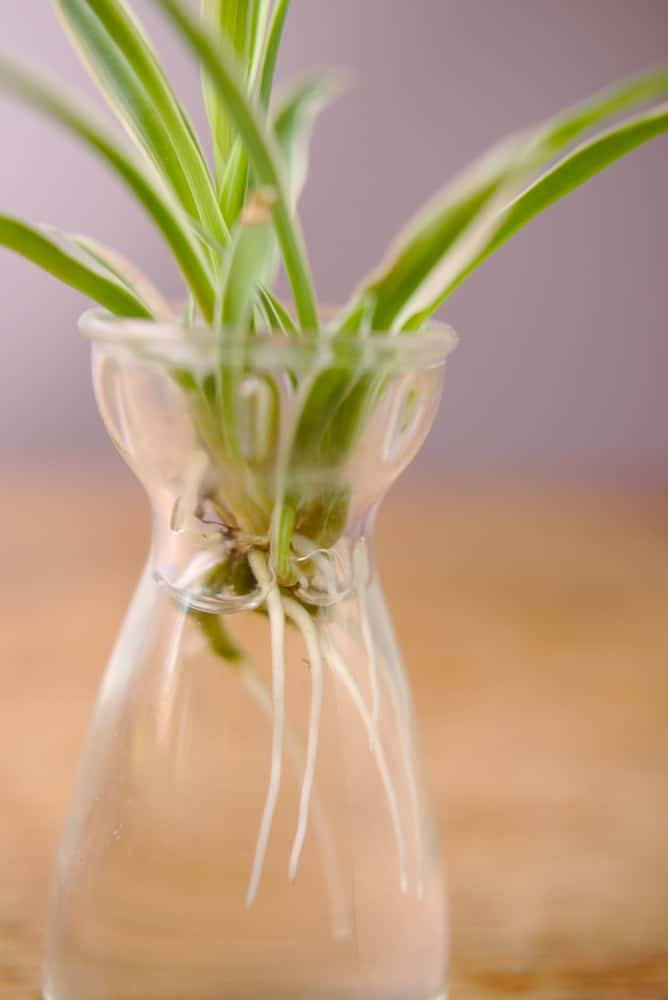
Does cinnamon work as a rooting hormone?
It’s debatable whether cinnamon works as a rooting hormone as no scientific studies have been done into this. It does seem to work as an anti-fungal remedy, though.
As above, there’s no harm in trying this out, especially if you’re worried about any fungus or bacteria killing your new houseplants. Just don’t go into this thinking that cinnamon as a rooting hormone is going to be the solution to every problem.
You may also be interested in: 15 Best Houseplant Books for Beginners
7. Honey
When it comes to natural rooting hormone, honey is one that may show a bit more promise in terms of its effectiveness – although, again, there’s no real proof of this either way.
The reason for using honey as a rooting hormone is due to its ability to prevent bacteria from taking hold and it’s because of this that you should try to use raw honey or pure honey for this. They’ll have only gone through very minimal processing, making them better for antibacterial purposes.
How do you make honey rooting hormone?
Your first step is to boil at least two cups of water in a pot on the stove and then, once it gets to a full rolling boil, add a tablespoon of the honey.

Give it a stir to mix the honey through the water a bit and then remove the pot from the heat. Once it cools to room temperature, check that the end of your cutting is cut to a 45 degree angle. Cover the bottom of the cutting with the honey solution and then put it in your potting medium of choice.
The rest of the honey mixture can then be put in an airtight container (which can simply be a resealable jar) to be used again in future.
8. Banana
Banana rooting hormone is an interesting DIY example of another natural alternative to a store-bought version.
The video below shows you exactly how this can be done.
That is, it basically involves taking half a banana (with the skin on!), putting the cutting into the fruit of the banana and planting it as is.
Make sure you only try this for outdoor plants, such as any houseplants you keep on a balcony. Otherwise, you’re going to have a fruit fly problem in your house once the fruit starts to break down if you use this rooting hormone for indoor plants.
Opinions about this online are pretty skeptical, to put it mildly, about the effectiveness as a natural rooting hormone of a banana. But based on ease of making it at least, this is probably the best rooting hormone to make at home.
9. Apple cider vinegar
Apple cider vinegar is known for being great for your own health. While not the greatest tasting drink around, fans of this say that the occasional sip of it helps to keep them healthy while also promoting things like weight loss
It’s also supposed to have antibacterial properties, which is why in any discussion of natural rooting hormones, apple cider vinegar is always on the list. There’s also no need to buy any “special” type here as just any standard apple cider vinegar will do (and will be cheaper too!)
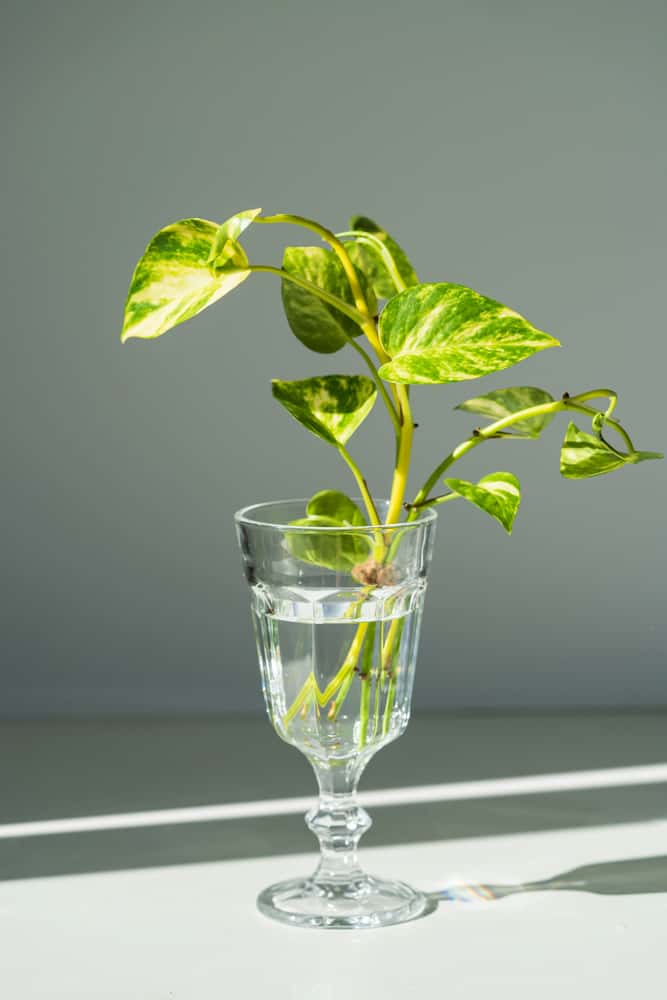
One thing to keep in mind is that using too much apple cider vinegar can actually kill your plant, as it’s also used as a weed killer in larger quantities.
This means that all you need is one teaspoon of vinegar for around five cups of water. Simply dip your cuttings into the vinegar mixture so that the end is covered but without soaking it, then transfer the cutting to the rooting medium.
You may also be interested in: 21 Best Indoor Self-Watering Planters (That Look Amazing)
10. Willow water
Much like aspirin, willow water naturally contains salicylic acid. Along with the IBA also found in this (the same chemical found in the gel and powder rooting hormones mentioned above), this means willow water has similar properties to aspirin in terms of its ability to prevent fungus, bacteria and other diseases or infections in your indoor plant.
Once you’ve made your willow water (and we’ll go through the process for this below), you can soak your cuttings for a few hours in this before planting them. And if you’re keen on watering plants with rooting hormone, willow water works great for this too.
In fact, willow water is great when used in conjunction with some of the other DIY rooting hormones on this list. For example, you can add aspirin, honey or cinnamon to the water for an extra punch.
What is willow water?
Willow water – also known as willow tea – is made from the twigs and branches of the willow tree. These twigs are soaked for several weeks, following which the mixture is strained and used as a natural rooting hormone.
The exact process for you to make this involves you collecting as many fresh twigs as possible from a willow tree. The aim here is to have them as green as you can, as these new twigs tend to have more acid than more mature branches.
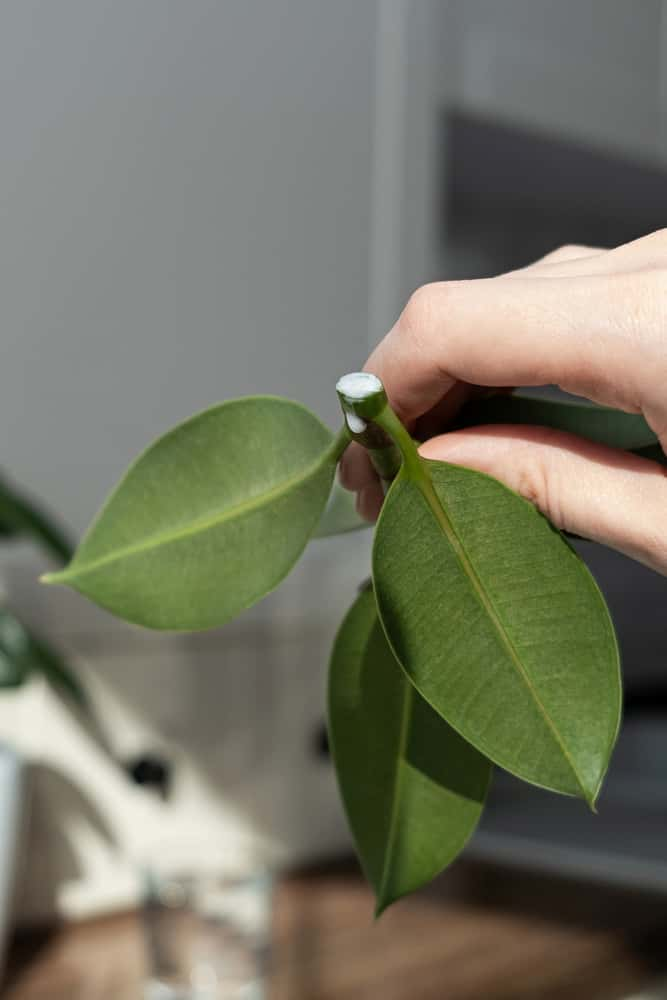
Once you have removed all the leaves, cut the twigs until they fit in the container you’re using for this (anywhere from one inch to six inches in length is fine). Put the trimmed twigs into the container and then fill it with boiled water. It’s best to have a ratio of about one-third twigs and two-thirds water.
You’ll then need to wait at least 24 hours before using this, although some people also recommend letting it sit for anywhere from three days to six weeks! It’s up to you how patient you want to be here but if you already have your new houseplant, you’ll probably need to go for a shorter period of time.
11. Saliva
Don’t worry, we’re not going to tell you to suck on the end of your cutting or even to lick it because…no, thank you. Instead, you’ll have to “generate” some saliva into a bowl or cup and then, like the other options, coat the end of the cutting in this before planting it.
So have a drink of water and start spitting, apparently!
Does saliva work as a rooting hormone?
Saliva is commonly cited as working well as a rooting hormone, although scientific evidence is hard to come by. That said, given it’s free to produce and certainly won’t harm your plant, it’s a good option as an alternative to store-bought versions.
However, as some unscientific proof of this, there are plenty of people on the internet who swear by saliva as a natural rooting hormone alternative. In fact, a lot of them consider it the most effective one on this list – so give it a try and see how it goes!
Can you make your own rooting hormone?
You can make your own rooting hormone using a variety of homemade methods. While it is not always certain how effective these are compared to one you buy at the store, they certainly won’t harm your plant so can be worth trying.
Also, in a lot of cases, if you make your own rooting hormone, it’s actually going to be cheaper than if you buy one as a lot of the ingredients can simply be found around the house. This makes it an even better idea to try a homemade rooting hormone on your new houseplant.
Scroll back up to see some of the most commonly cited examples of the best rooting hormone to make at home!
What is a natural rooting hormone?
A natural rooting hormone is when you use ingredients that wouldn’t otherwise be used for this to help stimulate plant growth in new plant cuttings, with the aim of making sure they root and grow.
As mentioned earlier, the choice of whether to go for a store bought rooting hormone or a natural one is up to you. It’s worth also highlighting that the commercial rooting hormones have far more scientific evidence backing them up that they work.
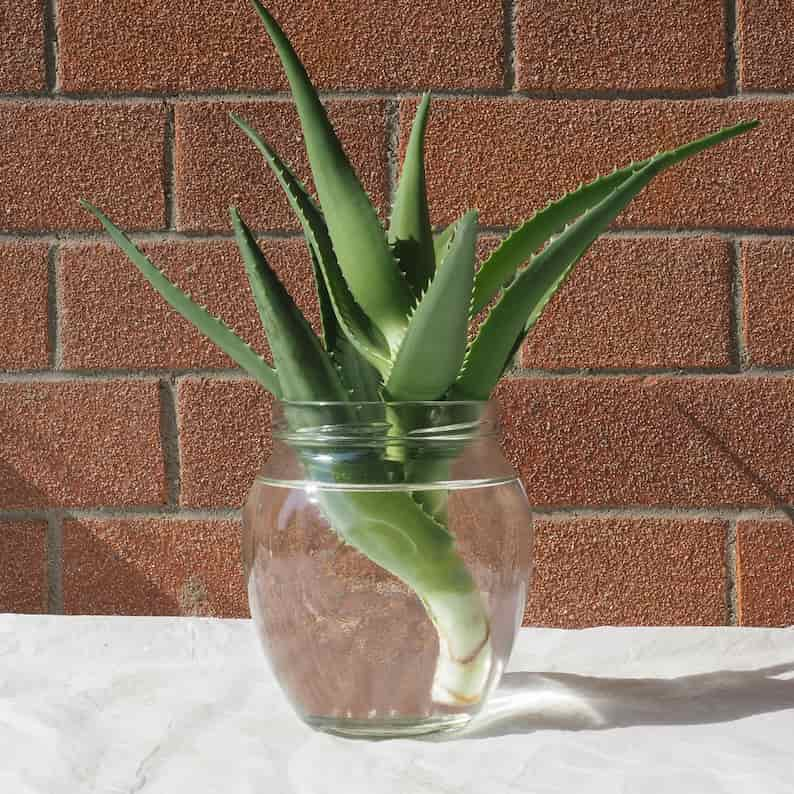
But that doesn’t mean that the DIY rooting hormones aren’t effective either, with plenty of amateur gardeners swearing by each of them. Worst case scenario is that nothing will happen, as you’re unlikely to hurt your plant with any of the natural rooting hormones.
Ultimately, it’s up to you in doing what you feel comfortable with. But if you want to save money or are trying to use more natural products around your home, using a natural rooting hormone on your new plant cutting could be a great strategy.
What is the best natural rooting hormone?
The best natural rooting hormone is probably apple cider vinegar, as there seems to be more of a consensus that this actually has some impact on the growth of new plants. That said, there is minimal scientific evidence supporting any of them, although many natural rooting hormones are very popular with amateur gardeners.
In choosing apple cider vinegar, this isn’t to say that the others do or don’t work, as there’s a lot of buzz on the internet about each of these being the best rooting hormone for different people. This means the best idea is probably to simply try whichever one where you already have the rooting hormone ingredients at home to see how it goes for your baby indoor plant.
Final thoughts on the best rooting hormone
Whether you prefer gel, powder or liquid rooting hormone, our top picks above are backed up by literally thousands of at-home gardeners with the same objective as you: to make sure that their little plant baby thrives.
While my personal preference is the HydroDynamics Clonex Rooting Gel, this is mainly due to me finding that gel rooting hormone is the easiest one to work with.
(I’m also a little bit lazy and so not having to add water, like you do with the powder and liquid, is pretty appealing. I also fully acknowledge that “adding water” is basically the least amount of work ever.)
That said, you may have your own preferences as to which is the best rooting hormone and that’s completely fine. If that’s down to wanting the most cost effective option, more power to you.
Of course, that could include choosing to make one of the natural rooting hormone options, which really isn’t that difficult to do, especially when most of the ingredients probably already in your pantry or medicine cabinet.
Whichever option you go for, we’re all rooting for your little plant cutting – pun fully intended!
